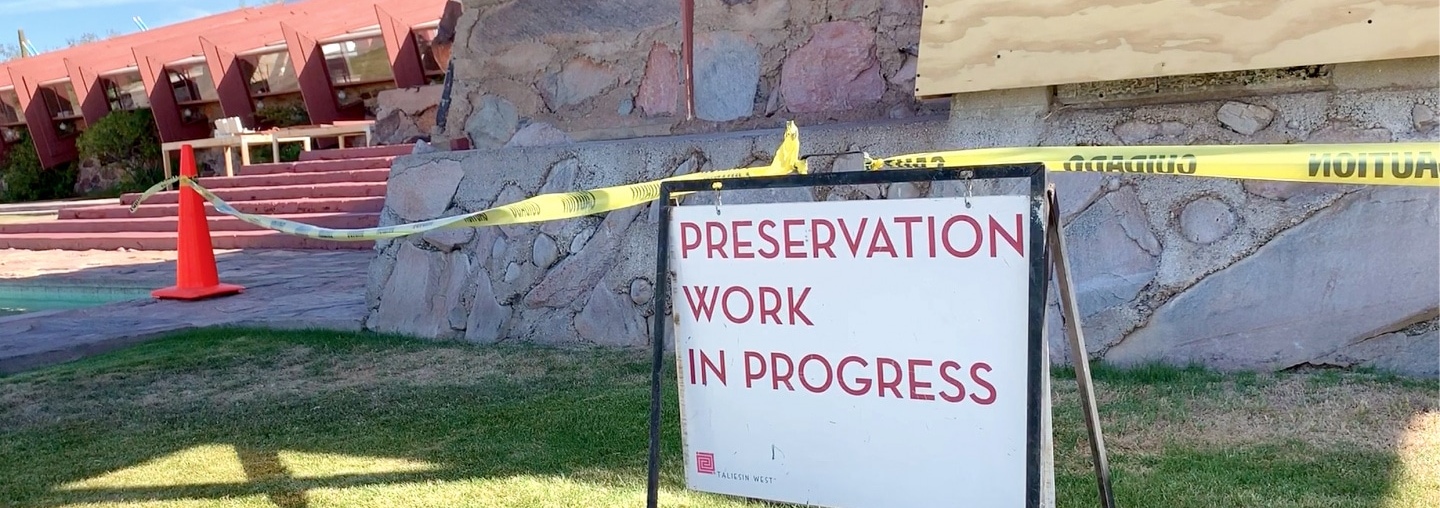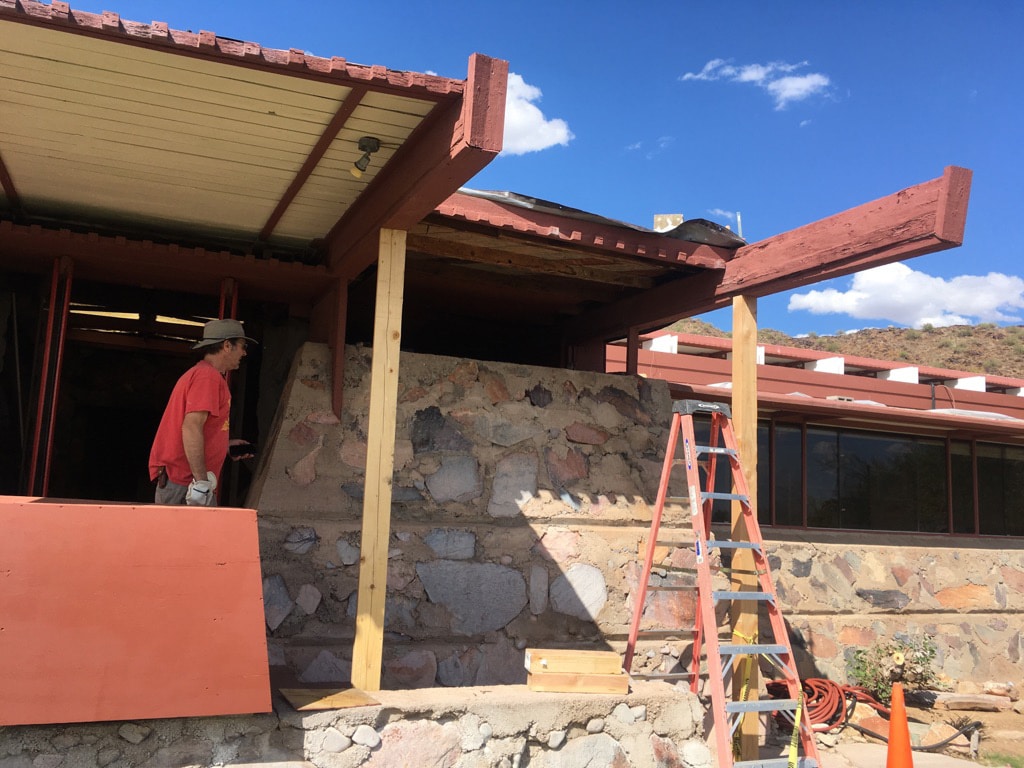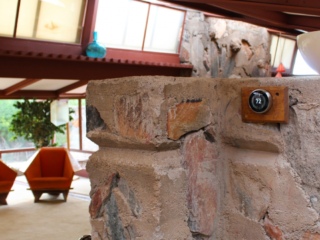
Living with Nature: Historic Preservation
Frank Lloyd Wright Foundation | Jun 24, 2019
As the Frank Lloyd Wright Foundation embraces more sustainable, innovative practices in our preservation work and beyond, we’re sharing some of these methods, and providing some tips on how you can incorporate these practices into your own home and life. Here, we discuss the topic of historic preservation and share some of the innovative preservation techniques we use at Taliesin and Taliesin West.
Historic preservation is all around us. From an older building that’s been restored and made into a coffee shop, to a historically significant space that has become a landmark; there are sites and spaces all over the country and the world that are utilizing sustainable preservation practices. In this edition of Living with Nature: Sustainable Practices from the Frank Lloyd Wright Foundation, we’re focusing on the topic of historic preservation. At Taliesin and Taliesin West, historic preservation is at the core of everything we do.

Architect Carl Elefante once said, “The greenest building is one that’s already built.” This has become a mantra of sorts for the green preservation movement, which has been on the rise all around the world. Depending on the building type and location, it can take anywhere between 10 to 80 years for a new building to overcome the negative environmental impacts created during new construction.
Research has shown that in Chicago, it would take a new single-family home 38 years to overcome the negative environmental impacts of construction. Although the savings may seem minuscule, over the course of time the savings would be substantial. In most cases, according to the Preservation Green Lab of the National Trust for Historic Preservation, there is between 4-46% energy savings when re-using existing buildings compared to building new.
Many may be surprised to know that in the United States, 43% of carbon emissions and 39% of total energy use is attributed to the construction and operation of buildings. When re-using existing structures, the embodied energy of the structure is being saved. This embodied energy is all the energy it takes to manufacture the materials that go into a building, transportation of those materials to the site, the actual construction of the building, and the use of the building throughout it’s lifetime, including use of lights and air conditioning.
Because Taliesin and Taliesin West, both National Historic Landmarks, were constructed decades ago, they are sustainable buildings. They were built using local materials, by local people. Today they are preserved by a team of experts using innovative, modern techniques, and are continuously being upgraded with more green technologies. Both sites are living, breathing spaces that are open for tours and act as a locations for the School of Architecture at Taliesin, as well as office space for Taliesin Preservation Inc. and the Frank Lloyd Wright Foundation.
Even if you’re not in the market for a new home or place for your business, you can still support historic preservation by supporting local businesses or organizations who are working hard to preserve historic spaces.

Here are some more great tips on how you can support historic preservation:
- Support historic preservation organizations. Your dollars and support will go a long way in making historic preservation possible.
- When purchasing or renting a home or place for business, choose a historic building if possible. When you choose to not have new home or business building built from scratch, you’re making a sustainable choice that will save embodied energy and building materials from landfills.
- Advocate for the preservation of historic buildings in your community. Educate yourself about the benefits of historic preservation and reach out to your local government officials and community members and voice your opinions and concerns to help prevent the demolition of historic buildings.
Check back next month to learn more about the sustainable practices we’re using at Taliesin and Taliesin West, and for even more tips on how you can help contribute to a more sustainable, beautiful world.
Living with Nature: Sustainable Practices from the Frank Lloyd Wright Foundation is a year-long campaign where we’ll be sharing sustainable practices and how they play an important part in conservation for National Historic Landmark sites, like Taliesin West in Arizona and Taliesin in Wisconsin. Along the way we’ll be sharing helpful tips on how you can incorporate these practices into your own life, to help you live a more green life.




